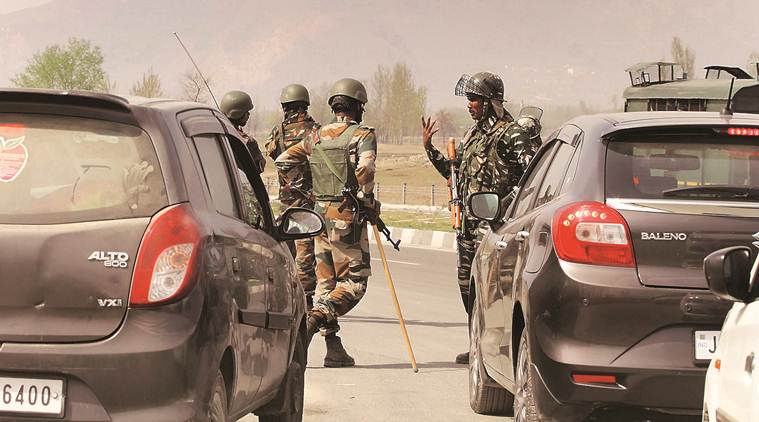
The article by Waheed ur Rahman Para (‘Democracy vs militarisation’, IE, April 22) appears to lack direction. Linking restrictions on the use of the national highway with the alienation and exclusion of Kashmiris is disingenuous. Branding a single measure to secure convoy movements as a “total siege” of Kashmir is not only hobbled logic but also borders on dangerous sophistry.
Para is equating a restriction of just two days in a week (now done away with entirely) on general movement, to prevent a recurrence of the Pulwama tragedy, with the “unfreedom” that has bolstered the azadi movement.
Para jumps nimbly between the government and “Hindutva” groups, an agility which he apparently shuns when speaking of mainstream Kashmiri parties to the exclusion of seditionists and terrorists. Having used the restrictions on the highway to protect convoy movement as a launching point, the author extrapolates this to purported Hindutva designs towards “dismantling the minority character of J&K”. He fails to explain how the movement of forces to fight Pakistan-based, trained and funded terrorists has any connection with demographic changes in Kashmir. While quite a few of the Hindutva groups are certainly expansionists in saffron clothing, the author possibly forgets that the current demography of J&K is the outcome of terrorism, coercion and blatant threats by separatists and terror groups that caused Kashmiri Pandits to leave their homes and hearths.
Para then turns to television anchors who “misrepresent and spread venom against Muslims”. Thereby he makes the third facile transition in his postulates. The first postulate began with describing the government reserving the national highway for two (now none) days a week for troop movement as “unfreedom”. He then transitioned to the broad postulate of demographic undermining of Kashmiri Muslims and he now moves on to speaking for the entire Indian Muslim community. Perhaps the author overlooks that for every freak publication accused of spewing distrust there are scores of others which hold, cherish and propagate liberal ideals.
Para describes the restriction, by the Centre on the use of the national highway as “hegemonic”. How can a step taken by the Centre to preserve the lives and limbs of security personnel be interpreted as the dominance of the state? Then the author broadens this cautionary measure to reflect “the deprivation of Kashmiris at the hands of jingoistic decrees”. He does not explain why he regards a purely defensive security protocol as a deprivation of Kashmiris or how this administrative step can be construed as jingoistic.
Para attributes the genesis of “the current phase of conflict” in Kashmir to the Amarnath crisis of 2008, which arose from the transfer of a 0.40 sq km of land to the Shri Amarnathji Shrine Board (SASB) sparking huge protests and withdrawal of PDP support to the then Congress-led government. A solution was devised involving the then NSA (M K Narayanan), whereby the SASB would temporarily use this kerchief of land during the Yatra period. Para’s diatribe omits the fact that the protests, orchestrated by the Hurriyat, richly served Pakistan’s anti-India Goebbelsian propaganda.
The author contradicts himself by saying “India that places Jammu & Kashmir, its only Muslim majority state, as an emblem of its secular credentials”. A secular state cannot, by definition, have provinces defined and their legitimacy based on religious grounds. It is only the post-independence democratic India that bows to the will of such a majority. Before then, Kashmir was ruled by the Sikhs, the British and the Dogras, without much fuss over the religious persuasion of the populace.
Thereupon Para dilates liberally on the excesses suffered by Muslims countrywide. It goes without saying that Muslims in India and globally are often at the receiving end of harsh and patently cruel prejudices. But then, is he trying to say that if the “senas” are subdued, the seditious groups in Kashmir will reconcile to the idea of India?
Like a smorgasbord of plaints laid out before him, the author picks up one, savours it and then moves on to another. Thus, having sampled restrictions on the national highway, secularism in peril, apprehensions and depredations suffered by the minorities and India and the Amarnath crisis, Para moves on to lifting of the security cover hitherto afforded to “mainstream politicians” in Kashmir. It is baffling that Para fails to differentiate between genuine mainstream politicians and separatists like Hashim Qureshi, Mirwaiz Umar Farooq, Abdul Ghani Bhat and Shabir Shah.
The writer is a retired IPS officer